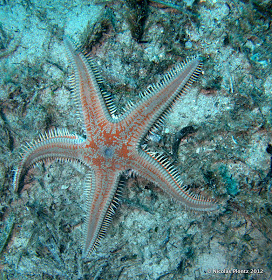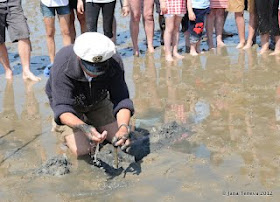Das Wattenmeer, known in English as the "Wadden Sea", is an intertidal sea, part of the North sea. I had the big pleasure to be last weekend on the car free island Juist (the second German Eastfrisian islands after the Dutch islands)... And one of the thing to do and really not to miss here is a walk on during low tide in the Wadden Sea with the local guide Heino...Heino transfers to you not only only his tons of enormous knowledge about the life under the sand, but also his love to this unique ecosystem on Earth!


Very witty he compares during the whole guided tour (from 2 till 3 hours) the sea with human organs cleaning the entire system. The shell common cockle (de. "Herzmuschel") are the kidneys, the worms (de. "Sandpierwurm") are the lungs....each of the water inhabitants has an unique cleaning function: the cockles filter the water and keep all dirt and toxins in them See for confirmation the quick test Heino did for us by putting cockles in one jar with muddy sea water next to jar without those cleaners. After 2 hours the jar with the shell contained some crystal clear water...Another very important local is the rock worm (de. "Sandpierwurm"). He is the one leaving some spaghetti-looking sand mountains behind. This is actually the cleaned sand once after it had passed through his body. A very visual way to see the difference between the cleaned and still-to-cleaned sand is the colour of it. The top layer of the sand held by Heino is the one already filtered by the efficient worms!



We have also met the famous "Seeklaffmuschel" (see picture below). A sand inhabitant who hides some 40 cm under the surface. Heino took it with big care outside for us so we could look closer and learn that this specie is also endangered. In the last 10 years their number has decreased really quick due to the human influence by enlarging harbours and changing working ecosystems...
At the end we could even hold some sea crabs to convince ourselves that they are not dangerous at all...













































